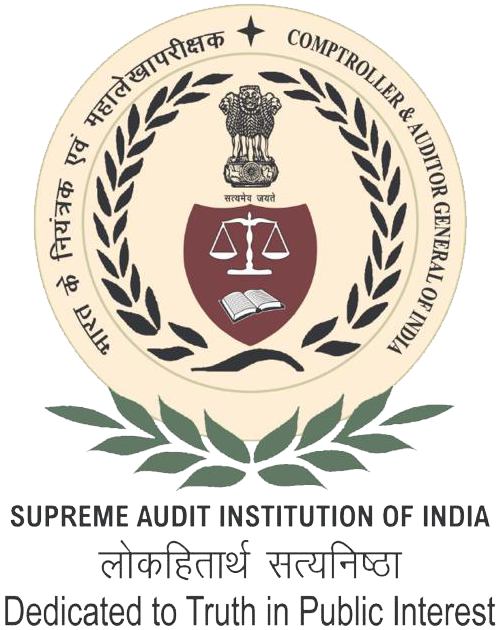- Home
- About Us
- Functions
- Resources
- Tour Program
- Publication & Reports
- Media Section
- Contact Us
- Employee Corner
Audit Reports
Compliance
Performance

Kerala
Report of 2009 - Performance Audit on Civil of Government of Kerala
Date on which Report Tabled:
Thu 25 Mar, 2010
Date of sending the report to Government:
Government Type:
State
Sector
Transport & Infrastructure,Power & Energy,Information and Communication,Environment and Sustainable Development,Agriculture and Rural Development,Social Welfare,Education, Health & Family Welfare,Defence and National Security,Local Bodies
Overview
This Report comprises three Chapters. Chapter I includes four performance audit reviews, Chapter II includes 25 paragraphs on audit of financial transactions of various Government departments and Chapter III includes a report on an integrated audit of the Scheduled Tribes Development Department.
The audit has been conducted in accordance with the Auditing Standards prescribed for the Indian Audit and Accounts Department. Audit samples have been drawn based on statistical sampling methods as well as on judgemental basis. The specific audit methodology adopted for programmes and schemes has been mentioned in the reviews. The audit conclusions have been drawn and the recommendations made, taking into consideration the views of the Government. The audit findings are given below:
The State Horticulture Mission was launched in 2005-06 to give new momentum to the development of horticulture, generate employment and enhance farm income. The Perspective Plan for the Mission period (2005-2012) was not prepared. The Annual Action Plans for 2005-08 were prepared without basic data from district/field lev el agencies, as a result of which the targets were unrealistic. A total amount of Rs 267.90 crore was received from Central and State Gov ernment during 2005-09, of which Rs 112.34 crore (42 per cent) remained unutilised with the State Horticulture Mission, the district Missions and other implementing agencies as of March 2009. There was excess payment of assistance of Rs 2.16 crore to farmers for ginger and turmeric crops and non-payment of assistance of Rs 51.81 lakh for pepper crops in the four test-checked districts under the area expansion programme. The total area under cultivation of major crops, namely pineapple. pepper and ginger declined in 2007-08 as compared to 2004-05. despite expenditure of Rs 10.93 crore during 2005-08 under the area expansion programme. The areas under banana and turmeric crops showed only a marginal increase. In the Idukki and Wayanad districts, the production of pepper decreased despite spending Rs 34.46 crore under the scheme. Rejuvenation of pepper gardens' during 2005-08. Subsidy of Rs 3.25 crore, earmarked for pack houses, mobile processing units and cold storages during 2005-09 was not utilised due to poor response arising out of low subsidy rates.
The National Rural Health Mission was launched by Government of India in April 2005 for strengthening rural health care institutions by providing adequate infrastructure facilities and funds. In Kerala, the State Health Mission was set up in September 2006. A review of the implementation of the National Rural Health Mission revealed improvements in the flow of funds to rural health institutions, upgradation of infrastructure in some health institutions and better health awareness among the rural population. Although sample household surveys were carried out in the three test-checked districts, facility surveys required to identify health care needs of rural areas were conducted only in Community Health Centres though the guidelines stipulated that these were also to be carried out in Primary Health Centres and Sub Centres. The Perspective Plan for the Mission period was not prepared. During 2007-08 and 2008-09, National Rural Health Mission funds of Rs 1.48 crore were spent on activities not approved by Government of India in the annual Programme Implementation Plans and Rs 51.86 lakh was diverted without their approval. Accredited Social Health Activists selected during 2007-08 and 2008-09 were not imparted training in three out of five prescribed modules. Availability of manpower, infrastructure and equipment in Community Health Centres and Primary Health Centres did not meet the Indian Public Health Standards. Guidelines for procurement of medicines prescribed by Government of India were not followed. Penalty of Rs 3.18 crore for delayed supplies of medicines was not levied. An effective Health Management Information System was not set up even though hardware and software valuing Rs 4.70 crore were procured for this purpose. Under the 'Integrated Disease Surveillance Project', hardware and accessories procured for Rs 54.82 lakh for video-conferencing units at the district level were lying idle as the State level video-conferencing unit had not been set up due to non provision of space by the Director of Health Services.

